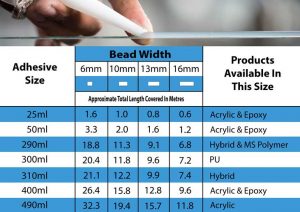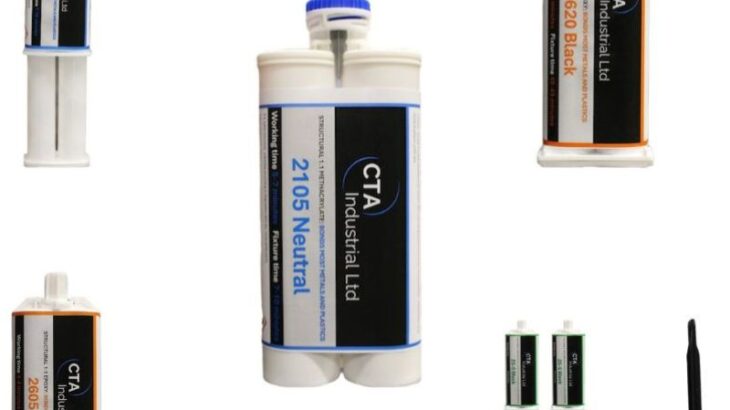How much adhesive is enough?
Have you ever wondered why glue doesn’t stick to it’s tube? It seems like such a silly question doesn’t it, but one that actually makes you stop and think. So too does the question of how much adhesive we need – especially when you consider that our first exposure to ‘glue’ was probably at school, where we just randomly squeezed the stuff out all over the place, then whiled away the afternoon calmly picking it off pot tops and fingers! However, as national technical experts in adhesives, it’s crucial that we prescribe the correct amounts to ensure fully functioning applications, so we are often asked for guidance with regards to the correct quantity.
Firstly, what’s the right adhesive?
We know there is a vast range of products that you need to have securely fastened, from paper and cardboard crafts to metal cladding, shipping and ammunition. Now, quantities won’t be too crucial if you’re working on a craft project, or making a Mother’s Day card, but when you work in the industrial, automotive, marine, aerospace and military sectors, accuracy is everything. You can’t trust to chance that the bonding is ‘probably alright’, you must be confident that it will fully function. Fortunately, we supply a great range from two-part structural acrylic through to single part adhesives, toughened epoxy resins, cyanoacrylates, UV curing and hot melt. These will bond metals, such as copper and brass, glass, plastics, replace nails and screws and even secure your artificial grass!

What makes it safe?
Having established which adhesive will best suit your application, you then need to pay particular attention to applying it correctly. We all know that substrates will struggle to bond on dusty surfaces, but contaminants such as grease, oxide films and rust inhibitors – that you may not be aware are present – will also impede the bonding process. It is vital that surfaces are properly prepared – in fact, poor surface preparation is the number one reason for bond failure. Don’t risk it. See our tips about surface preparation here
What happens if there is too little or too much?
Let’s take packaging as an example. Too little adhesive may well result in packages opening during the assembly, storage or distribution process. You may be trying to use less to reduce costs, but this is a false economy as you will be forced to recover the items, re-pack them and replace any damaged goods – not to mention the damage to your reputation, which is much harder to recover. Too much, on the other hand is wasteful and expensive and could create other issues such as increased setting times, and ‘stringing’ that will mar the appearance of the goods. Either way, you’re facing failure, which may be survivable in packaging, but could be catastrophic in some of YOUR industries. Here you can read all about bead length and quantities contained in our cartridges.
What should I do if I’m not sure?
Call us or drop a quick enquiry here! We are always happy to talk through any and all bonding issues you have and we are certain we can help, just try us.
When it comes to adhesives, more is not necessarily better. Part of our service is to advise you on matters such as quantity and preparation, because we know that, for you, failure is not an option, so neither is it for us.
Or alternatively use the chart below:

* By the way, glue doesn’t stick to the tube because it’s low surface energy plastic (non-stick) which is designed to work once it leaves the tube and be mixed through the nozzle. Some are dissolved in chemicals (solvents) that keep them stable and non-sticky in the tube, evaporate in oxygen and get absorbed by the surfaces they’re sticking to. Now you know!

